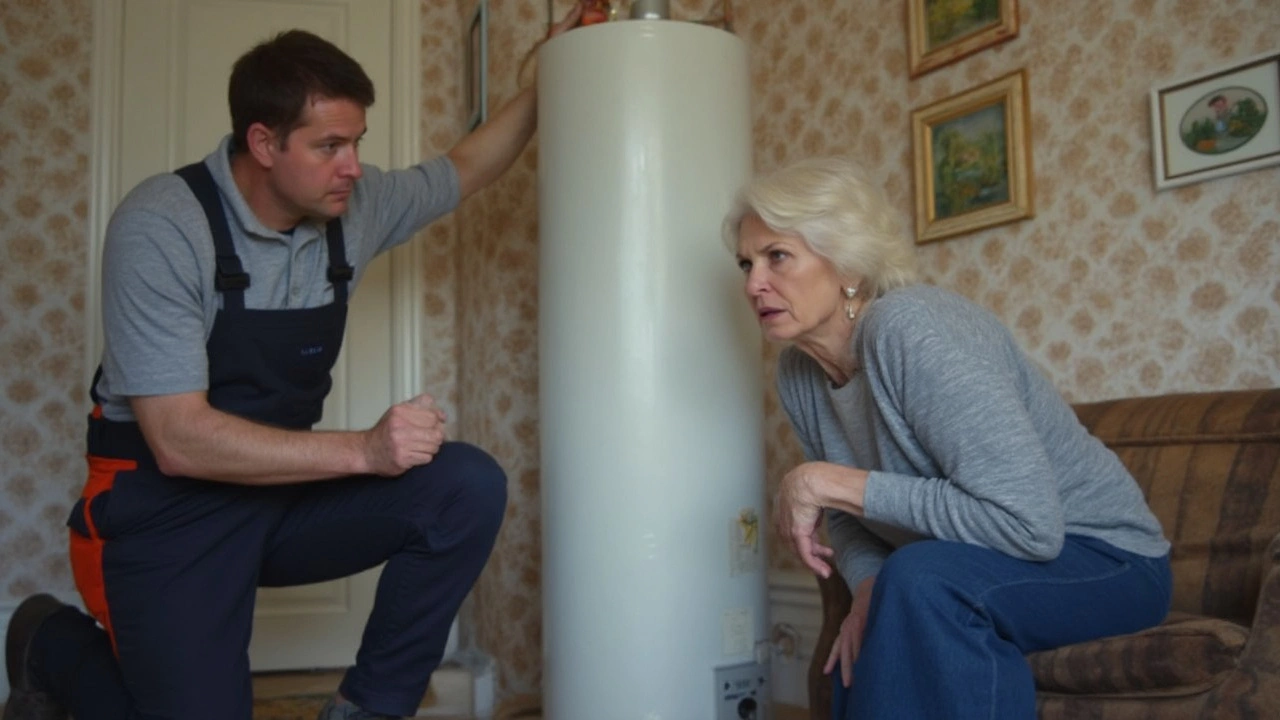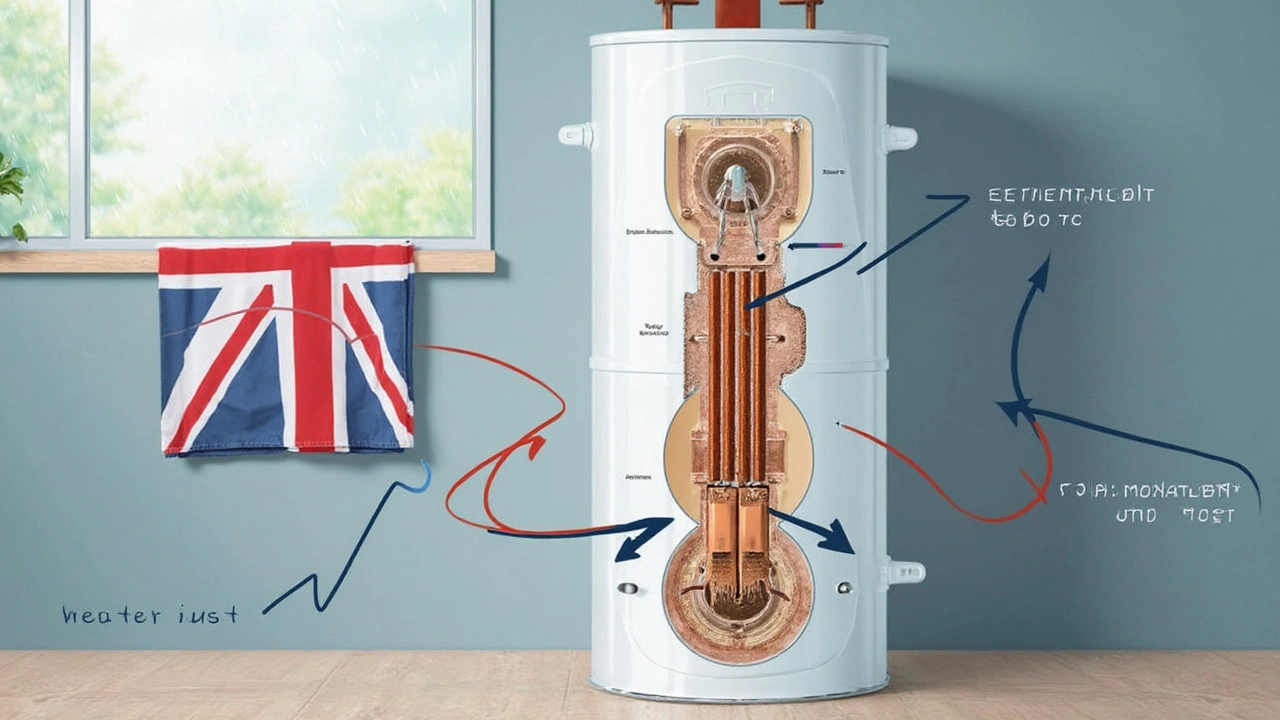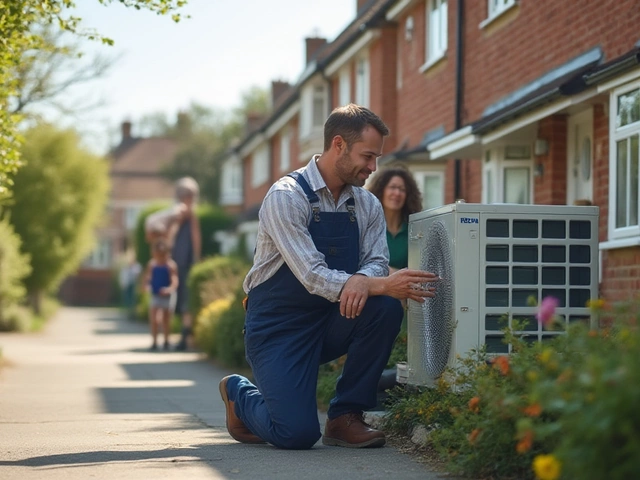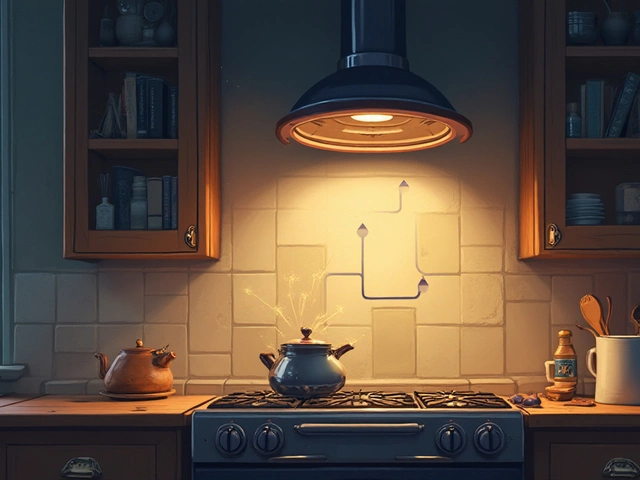Picture this: you're looking forward to a hot shower, you twist the knob, and—bam—ice cold water. It’s a cruel hiss from your water heater, telling you it’s called it quits. Most folks never think about their water heater, not until things go sideways. And when these hulking tanks of metal finally give up, they rarely go quietly. Let’s talk about where water heaters actually fail—and why it’s not just random bad luck, but years in the making under your very nose.
The Most Vulnerable Points of Water Heaters
Here’s a surprise—most water heaters don’t just spring a leak anywhere. They have favorite weak spots, like old football knees that finally give out. The number one failure point? The bottom of the tank. This is where rust, corrosion, and sediment are relentless troublemakers. The inside of most tanks is coated with glass or ceramic linings that slow down rust, but those linings aren’t perfect. Over time, minerals in your water settle right at the bottom, where heat cooks them into a hard, crusty layer. This layer gets thicker year after year, raising the temperature underneath and stressing out the metal.
Stats from the International Association of Certified Home Inspectors actually show that 75% of water heater tank failures begin with the tank itself—usually right near the base. Why? Besides sediment buildup, the tank’s steel eventually rusts through from the inside. Water heaters have a sacrificial “anode rod” that’s meant to attract corrosion, protecting the tank. But most folks don’t even know it exists, let alone replace it. Once that rod is used up, corrosion has a field day on the steel.
But it’s not all about the bottom. Fittings and connections—especially the cold water inlet and hot water outlet pipes—are also common leaking points. Over time, these joints succumb to pressure, heat cycles, and minerals. Even little pinhole leaks can pour out gallons over weeks, rotting the subfloor or walls before you realize it. Electrical connections (for electric heaters) and burner assemblies (for gas models) can also fail, but not as frequently as the tank itself.
Corrosion: The Silent Killer
If you want to understand why water heaters fail where they do, you’ve got to meet their nemesis: corrosion. When metal, water, oxygen, and minerals meet, rust is inevitable—unless you outsmart it.
Every standard water heater has a built-in anode rod made of magnesium, aluminum, or zinc. This rod is designed to corrode first, drawing electrochemical damage away from the tank walls. Unfortunately, anode rods don’t last forever, usually two to five years, depending on water quality. If you never swap it out, rust will treat your tank like a buffet.
Hard water speeds up tank damage, as minerals like calcium and magnesium leave scale deposits. This crust doesn’t just look ugly. It acts like an oven mitt, insulating the heating element and forcing your heater to crank the heat to reach your set temperature. The extra heat stretches and contracts the metal, cracking the protective lining and welcoming even more corrosion. In gas models, thick scale can cause the tank bottom to overheat and warp, hastening a catastrophic leak.
| Failure Point | Common Cause | Frequency (%) |
|---|---|---|
| Tank Bottom | Corrosion/Sediment | 69 |
| Pipe Connections | Wear/Pressure/Leaks | 16 |
| Heating Elements | Mineral Buildup | 8 |
| Valves & Controls | Valve Failure | 7 |
Notice the numbers? The water heater failure is mostly a battle with corrosion. If you’re in a spot with hard water, your system is on a fast track to failure. That’s why softening your water or descaling your tank isn’t just a “nice to have”—it can double your water heater’s lifespan.

Sneaky Early Signs Your Water Heater Is About to Fail
Water heaters rarely explode out of nowhere. They leave clues—if you know what to look for. First, listen for odd sounds. A popping or rumbling coming from the tank means there’s probably a pile of minerals baking away at the bottom. This isn’t just noise pollution; it’s a sign that your heater is working overtime and could be on its last legs.
Another warning? Rusty water. If the hot tap lets out reddish or brownish water (even just a little), chances are the inside of your tank or the anode rod is already half gone. Some people think they just have “old pipes,” but most of the time, it’s the water heater waving the white flag. If you spot small water puddles or feel dampness around the base, it might seem minor—until your floor floods in a disaster that could rack up thousands in water damage repairs.
Don’t overlook temperature swings, either. Struggling to get water hot enough? It could be a dying heating element or thick sediment weighing things down. Electrical models are a bit more obvious when they go kaput (“No hot water at all?” Yup, that’s an element), but gas models can fail more subtly, with irregular hot water or strange-smelling exhaust.
Worst case, a failing pressure relief valve can turn your heater into a potential rocket. If this valve drips or hisses, get it checked right away. Stories about tanks launching through roofs aren't just urban legends—they’ve actually happened when relief valves got stuck and pressure kept building. Don’t ignore mystery leaks or unusual sounds. Fast action saves money and headaches.
Preventing Catastrophic Water Heater Failures
There’s no magic cure to stop water heaters from failing, but most disasters are preventable. It boils down to maintenance—specifically, a little attention once or twice a year goes a long way. First off, test your temperature and pressure relief (TPR) valve by lifting its lever so water spills out the drainpipe. If nothing happens, or it sticks, replace it pronto.
Next, flush the tank. Draining a few gallons every six months clears out sediment before it builds up into trouble. If you hear popping, it’s time for a deeper clean. Electric heater owners should turn off the power, then remove and check the heating elements for scale. For gas models, make sure the burner is clear of soot and debris. If the flame is yellow instead of blue, that’s a red flag—call a pro.
And don’t forget the anode rod. You can unscrew it from the top of the heater, check it for thinning, and swap it out if it’s mostly eaten away (less than half remains). This small act can add years to your heater’s life. If you live somewhere with truly hard water, installing a water softener or a whole-house filtration system can also make a big impact.
- Check TPR valve yearly
- Flush some water from the tank every 6 months
- Replace anode rod every 2-5 years
- Inspect for leaks at connections and tank base
- Monitor tank for rust, dampness, or odd sounds
If your heater’s over 10 years old, keep a closer eye on it. Most tank water heaters last 8-12 years, so after the decade mark, the risk of flooding or a major failure jumps. Keep a drain pan under the heater if it’s anywhere above a finished floor, and consider replacing it before it breaks, not after.

When Replacement Beats Repair
Sometimes, repairs just patch up a failing system that’s past its prime. If your tank is leaking from the base, there’s really no fix that lasts. Corrosion has eaten away the steel from the inside out, and it’s only a matter of time before the leak grows from a puddle to a flood. If components like heating elements, thermostats, or pipe connections fail, you can usually swap them out. But once you see rusty water, hear persistent noise, or spot water at the tank’s bottom, your best move is to replace the whole thing.
When shopping for replacements, consider newer models with higher energy efficiency. Tankless models don’t store water, so they’re less prone to tank corrosion. If you stick with a tank model, check out those with better corrosion resistance and longer anode rods. Extended warranties usually reflect heavier-duty construction, which means they last longer before they fail.
Keep in mind: installation matters. Poorly installed heaters often fail at pipe connections or valves, so hire a pro if you’re out of your depth. Put a water leak detector near your water heater, especially if water damage would wreck floors, drywall, or stored stuff. A smart leak sensor can even alert your phone if something’s off, giving you time to act before disaster strikes.
Water heater failures are usually loud, wet, expensive, and completely avoidable—if you pay attention to where and why they break down. A few checks each year, and knowing the warning signs, can save you loads of cash and cold showers. Think of it like car maintenance: ignore the oil dipstick at your own risk.





